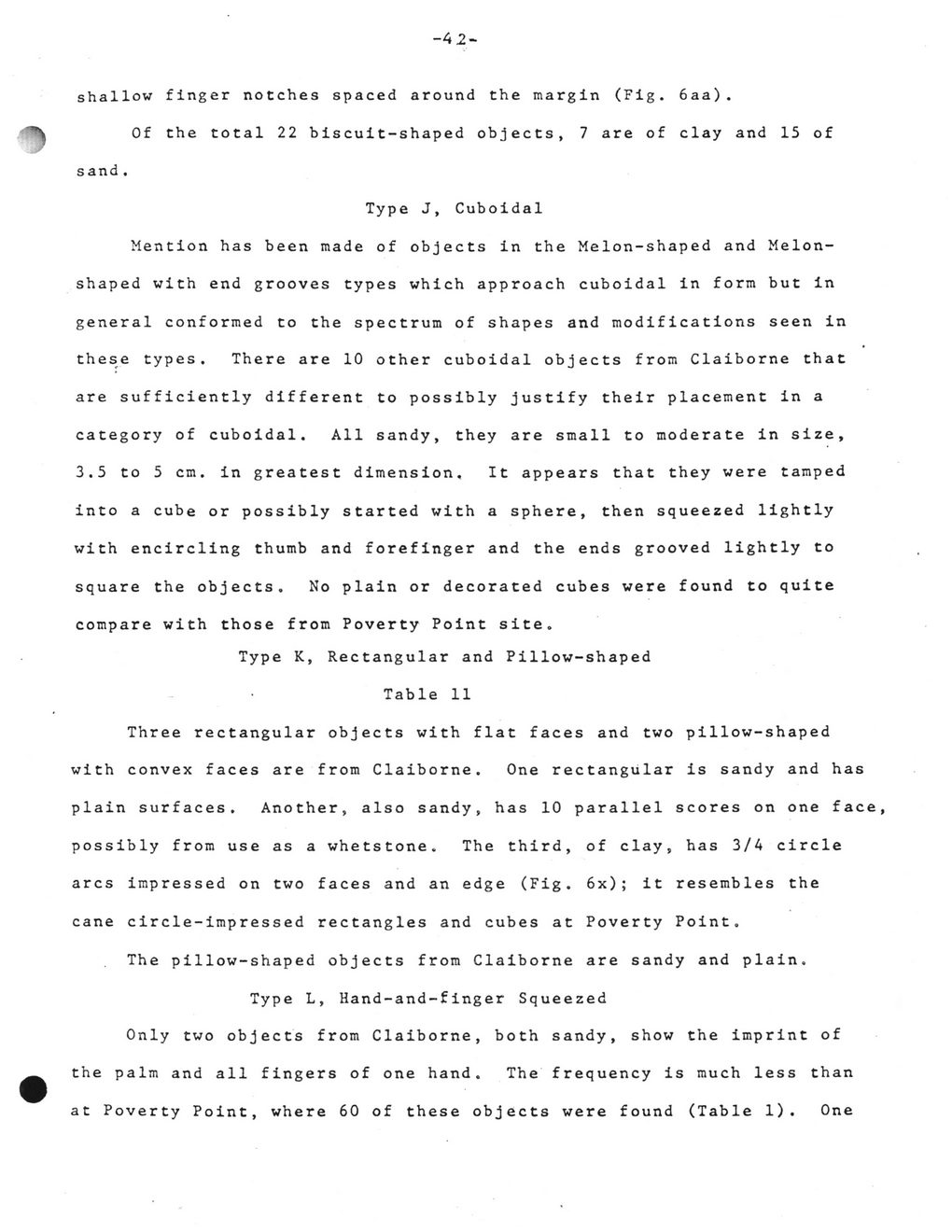This text was obtained via automated optical character recognition.
It has not been edited and may therefore contain several errors.
shallow finger notches spaced around the margin (Fig. 6aa). Of the total 22 biscuit-shaped objects, 7 are of clay and 15 of sand . Type J, Cuboidal Mention has been made of objects in the Melon-shaped and Melonshaped with end grooves types which approach cuboidal in form but in general conformed to the spectrum of shapes and modifications seen in these types. There are 10 other cuboidal objects from Claiborne that are sufficiently different to possibly justify their placement in a category of cuboidal. All sandy, they are small to moderate in size, 3.5 to 5 cm. in greatest dimension. It appears that they were tamped into a cube or possibly started with a sphere, then squeezed lightly with encircling thumb and forefinger and the ends grooved lightly to square the objects. No plain or decorated cubes were found to quite compare with those from Poverty Point site. Type K, Rectangular and Pillow-shaped Table 11 Three rectangular objects with flat faces and two pillow-shaped with convex faces are from Claiborne. One rectangular is sandy and has plain surfaces. Another, also sandy, has 10 parallel scores on one face, possibly from use as a whetstone. The third, of clay, has 3/4 circle arcs impressed on two faces and an edge (Fig. 6x); it resembles the cane circle-impressed rectangles and cubes at Poverty Point. The pillow-shaped objects from Claiborne are sandy and plain. Type L, Hand-and-finger Squeezed Only two objects from Claiborne, both sandy, show the imprint of the palm and all fingers of one hand. The frequency is much less than at Poverty Point, where 60 of these objects were found (Table 1). One

Walden 053